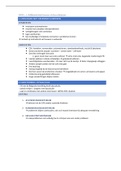OUTCOMES:
Apply the basis of assessment for trading income
Compute ‘overlap profits’ and show how relief is obtained
Calculate the effect on profits of a change of accounting date
Show how adjustments to a profit and loss account can produce a loss
Identify the forms of relief for trading losses and compute assessments after loss relief
Advise a taxpayer on the optimum use of losses
Advise on the Income Tax consequences of starting up a business
CURRENT YEAR BASIS OF ASSESSMENT:
Tax year is 6th April to 5th April
Unlikely to coincide with business accounts
Current year basis (cyb) matches adjusted profits to tax years
Basis period for a tax year is the accounting year ending in that tax year
OPENING YEAR RULES:
Tax year Basis period
1 Date of commencement to the following 5 April
(the ‘actual’ basis) (31 March for convenience)
2 (a) 12 months to the accounting date in the
second tax year (if possible)
Or
(b) The first 12 months of trading (if accounting
date in the second tax year is less than 12 months
after commencement)
3 Current year basis
4 etc. Current year basis
OVERLAP PROFITS:
Because basis periods can overlap, profits can be taxed more than once
Deducted from the final year’s profits
If overlap profits > final year profits = loss (see later)
Overlap profits created can also be used on change of accounting date
LECTURE ACTIVITY:
1. A business starts on 1/1/22, and draws up
accounts to 31/12/22. What is the basis of assessment for 2021/22 and 2022/23?
2021/22 : 1/1/22 to 31/3/22
, 2022/23 : 1/1/22 to 31/12/22
2. Assuming that the business makes profits of £12,000 in the first 12 months, quantify the
overlap profits.
2021/22 : 3/12 x £12,000 = £3,000
2022/23 = £12,000
Overlap profits = £3,000
3. How will overlap profits be relieved?
By deduction from final year’s assessment, or on a change of accounting date
YEARS OF ASSESSMENT:
5 April 2023
5 April 2022
5 April
2021 Current year
Actual
3000 12000
31 Dec 2022 31 Dec 2023
1 Jan 2022
Profits 12000
Start business
EXAMPLE:
A business commences on 1st January 2022, and prepares accounts to 30th June 2022 (profit £8,000),
and annually thereafter. It makes £24,000 for the year to 30 June 2023.
2021/22: 1.1.22-31.3.22:
3/6 x 8,000 = £4,000
2022/23 1.1.22 - 31.12.22:
£8,000 + £12,000 (6/12 x 24,000)
£20,000
2023/24: y/e 30.6.23: £24,000
Overlap profit = £4,000 +12,000 = £16,000
YEARS OF ASSESSMENT:
5 April 2022
5 April 2021 5 April 2013
actual Current year:
4000 8000+6/12x24000










